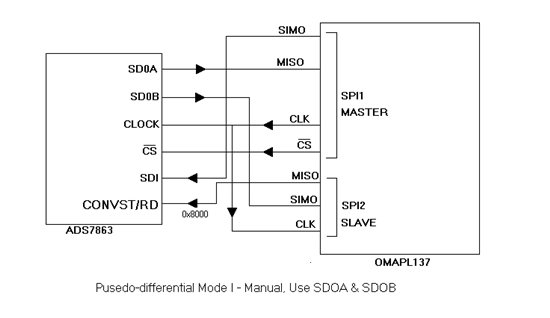We are using ADS7863 in pseudo differential mode I i.e. 3 x 2 non differential signals are output to SDOA, SDOB. We need to get the Data in the DMA mode?
Question: How do we drive the CONVST (Conversation Start), RD and CSbar pins?
The application note suggests connecting CONVST to RD and CSbar to GND. If this is good, then how do we drive CONVST line? Can we use CS of the master SPI (since the CS is grounded)?
Any suggestions are appreciated.


